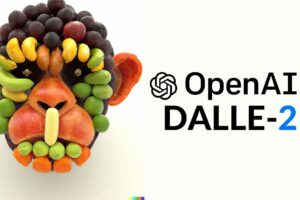
Introduction –
In the ever-evolving landscape of technology, ‘Beyond Boundaries: Embracing the Future with AI Tools’ invites you on a journey into the forefront of innovation. Explore how artificial intelligence transcends conventional limits, reshaping industries, and propelling us into an era where the extraordinary becomes the norm. Discover the transformative power of AI tools as we navigate the uncharted territories of the future, unlocking new possibilities and redefining the way we interact with technology. Join us in this exploration of limitless potential, where the fusion of human ingenuity and AI advancements paves the way for a future beyond boundaries.

AI Tools
In the ever-evolving landscape of technology, ‘Beyond Boundaries: Embracing the Future with AI Tools’ invites you on a journey into the forefront of innovation. Explore how artificial intelligence transcends conventional limits, reshaping industries, and propelling us into an era where the extraordinary becomes the norm. Discover the transformative power of AI tools as we navigate the uncharted territories of the future, unlocking new possibilities and redefining the way we interact with technology. Join us in this exploration of limitless potential, where the fusion of human ingenuity and AI advancements paves the way for a future beyond boundaries.
Total 6 Example of AI Tools






Future With AI Tools
- Healthcare:
- Diagnostic Assistance: AI tools can assist medical professionals in diagnosing diseases more accurately and quickly by analyzing medical images, patient records, and genetic data.
- Drug Discovery: AI can accelerate drug discovery by analyzing large datasets to identify potential drug candidates and predict their effectiveness.
- Education:
- Personalized Learning: AI tools can provide personalized learning experiences by adapting content and pacing to individual student needs.
- Automated Grading: Grading and assessment processes can be automated, allowing educators to focus more on teaching and mentoring.
- Finance:
- Fraud Detection: AI algorithms can enhance fraud detection in financial transactions by identifying patterns indicative of fraudulent activity.
- Algorithmic Trading: AI-driven algorithms can optimize trading strategies and make real-time decisions based on market conditions.
- Manufacturing:
- Predictive Maintenance: AI can predict equipment failures and schedule maintenance before breakdowns occur, reducing downtime in manufacturing processes.
- Quality Control: Computer vision and machine learning can be used for automated quality inspection on production lines.
- Retail:
- Personalized Shopping Experience: AI tools can analyze customer preferences and behavior to provide personalized product recommendations.
- Supply Chain Optimization: AI helps in optimizing inventory management, demand forecasting, and logistics.
- Transportation:
- Autonomous Vehicles: The future may see widespread adoption of autonomous vehicles, powered by AI for navigation and decision-making.
- Traffic Management: AI can optimize traffic flow, reducing congestion and improving overall transportation efficiency.
- Energy:
- Smart Grids: AI tools can optimize the distribution of energy in smart grids, improving efficiency and reliability.
- Energy Consumption Optimization: AI algorithms can analyze patterns to optimize energy consumption in buildings and industrial processes.
- Entertainment:
- Content Creation: AI can be involved in content creation, including generating music, art, and even writing scripts.
- Recommendation Systems: Enhanced recommendation algorithms can provide more accurate suggestions for movies, music, and other forms of entertainment.
- Cybersecurity:
- Threat Detection: AI-powered systems can rapidly detect and respond to cybersecurity threats by analyzing patterns and anomalies in network traffic.
- Behavioral Analysis: AI tools can monitor user behavior to identify unusual patterns that may indicate a security threat.
- Environment and Sustainability:
- Climate Modeling: AI can contribute to more accurate climate modeling and prediction, helping in the development of strategies to address environmental challenges.
- Resource Management: AI tools can optimize resource utilization and reduce waste in various industries, contributing to sustainability efforts.
Advantages of AI Tools
- Healthcare:
- Diagnostic Assistance: AI tools can assist medical professionals in diagnosing diseases more accurately and quickly by analyzing medical images, patient records, and genetic data.
- Drug Discovery: AI can accelerate drug discovery by analyzing large datasets to identify potential drug candidates and predict their effectiveness.
- Education:
- Personalized Learning: AI tools can provide personalized learning experiences by adapting content and pacing to individual student needs.
- Automated Grading: Grading and assessment processes can be automated, allowing educators to focus more on teaching and mentoring.
- Finance:
- Fraud Detection: AI algorithms can enhance fraud detection in financial transactions by identifying patterns indicative of fraudulent activity.
- Algorithmic Trading: AI-driven algorithms can optimize trading strategies and make real-time decisions based on market conditions.
- Manufacturing:
- Predictive Maintenance: AI can predict equipment failures and schedule maintenance before breakdowns occur, reducing downtime in manufacturing processes.
- Quality Control: Computer vision and machine learning can be used for automated quality inspection on production lines.
- Retail:
- Personalized Shopping Experience: AI tools can analyze customer preferences and behavior to provide personalized product recommendations.
- Supply Chain Optimization: AI helps in optimizing inventory management, demand forecasting, and logistics.
- Transportation:
- Autonomous Vehicles: The future may see widespread adoption of autonomous vehicles, powered by AI for navigation and decision-making.
- Traffic Management: AI can optimize traffic flow, reducing congestion and improving overall transportation efficiency.
- Energy:
- Smart Grids: AI tools can optimize the distribution of energy in smart grids, improving efficiency and reliability.
- Energy Consumption Optimization: AI algorithms can analyze patterns to optimize energy consumption in buildings and industrial processes.
- Entertainment:
- Content Creation: AI can be involved in content creation, including generating music, art, and even writing scripts.
- Recommendation Systems: Enhanced recommendation algorithms can provide more accurate suggestions for movies, music, and other forms of entertainment.
- Cybersecurity:
- Threat Detection: AI-powered systems can rapidly detect and respond to cybersecurity threats by analyzing patterns and anomalies in network traffic.
- Behavioral Analysis: AI tools can monitor user behavior to identify unusual patterns that may indicate a security threat.
- Environment and Sustainability:
- Climate Modeling: AI can contribute to more accurate climate modeling and prediction, helping in the development of strategies to address environmental challenges.
- Resource Management: AI tools can optimize resource utilization and reduce waste in various industries, contributing to sustainability efforts.
It’s important to note that the future development of AI tools will also bring ethical and societal challenges, such as concerns about bias in algorithms, job displacement, and privacy issues. Continued research, development, and responsible deployment of AI technologies will be crucial for realizing their potential benefits while addressing these challenges.
Disadvantages of AI Tools
While AI tools bring about significant benefits, they also come with certain disadvantages and challenges. It’s important to be aware of these potential drawbacks to use AI responsibly. Here are some common disadvantages of AI tools:
- Job Displacement:
- Automation of Jobs: AI and automation technologies can lead to the displacement of certain jobs, especially those that involve repetitive and routine tasks.
- Bias and Fairness:
- Algorithmic Bias: AI models can inherit biases present in the data they are trained on, leading to biased outcomes and potentially discriminatory decisions.
- Fairness Challenges: Ensuring fairness in AI systems, particularly in sensitive areas like hiring and lending, remains a significant challenge.
- Lack of Creativity and Intuition:
- Absence of Creativity: AI lacks human-like creativity and intuition, limiting its ability to approach problems with innovative and out-of-the-box solutions.
- Dependency on Data:
- Data Quality: AI models heavily depend on the quality and quantity of data. If the data is biased, incomplete, or inaccurate, it can lead to unreliable AI predictions and decisions.
- Security Concerns:
- Vulnerability to Attacks: AI systems can be vulnerable to adversarial attacks where malicious actors manipulate input data to deceive the system.
- Privacy Issues: The use of AI in surveillance and data analysis raises concerns about individual privacy.
- Complexity and Lack of Transparency:
- Black Box Problem: Many AI models operate as “black boxes,” making it challenging to understand the decision-making processes inside the algorithm.
- Complexity of Models: Highly complex AI models, such as deep neural networks, can be difficult to interpret and explain.
- Ethical Dilemmas:
- Ethical Decision-Making: AI systems may face ethical dilemmas that humans might handle differently. Deciding how to encode ethical principles into AI algorithms is a complex challenge.
- High Initial Costs and Maintenance:
- Implementation Costs: Developing and implementing AI systems can be expensive, especially for small businesses or organizations with limited resources.
- Continuous Maintenance: AI models require ongoing maintenance, updates, and monitoring, adding to the overall cost.
- Lack of Common Sense:
- Limited Generalization: AI systems may struggle with common-sense reasoning and generalization, leading to mistakes in understanding context and ambiguous situations.
- Impact on Social Interaction:
- Human Interaction: Increased reliance on AI, especially in customer service and communication, may reduce the quality of human interaction, impacting social relationships.
- Regulatory and Legal Challenges:
- Lack of Regulations: Rapid advancements in AI technology have outpaced the development of regulatory frameworks, leading to challenges in addressing ethical and legal issues.
Balancing the benefits of AI with these challenges requires a thoughtful and ethical approach to development and deployment. Addressing these disadvantages involves ongoing research, industry collaboration, and the establishment of ethical guidelines and regulations.







Love you a lots 😘🫂